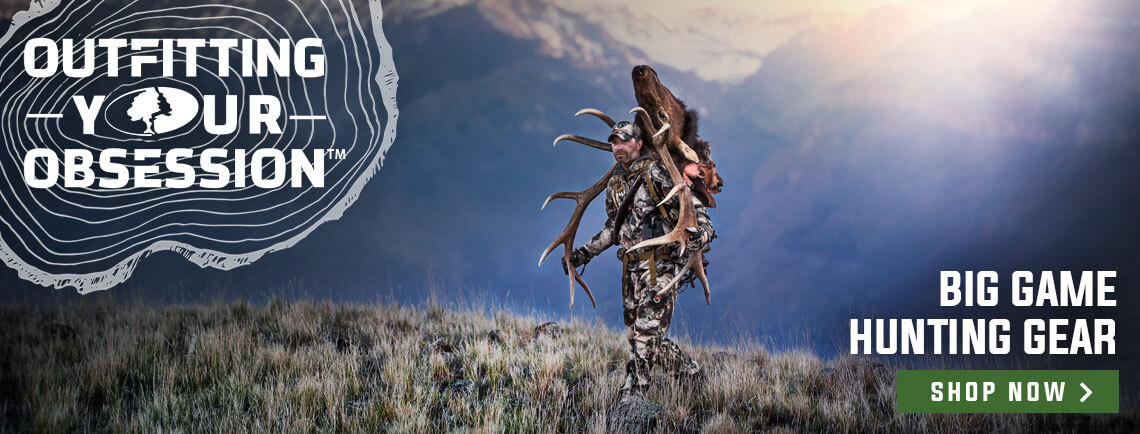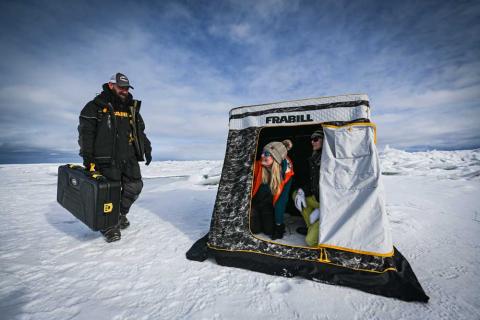Mark Kayser
As you may have ascertained from watching an episode of Paramount’s hit cowboy thriller “Yellowstone,” things are a bit rougher out West despite the breathtaking vistas. The same could be said of shed antler hunting the West. You likely will not run into Rip Wheeler in the backcountry, but you will face many adversaries not common on a farmland hunt for shed whitetail antlers.
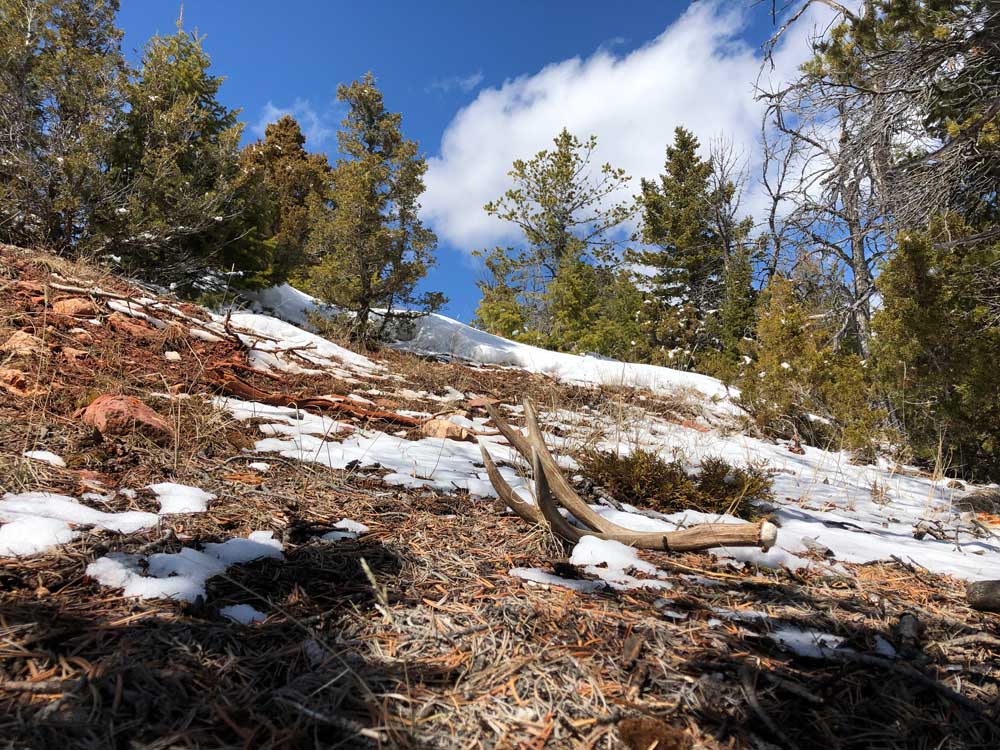
One afternoon I idled my ATV to a trailhead after a long day of ascending nearly 3,000 feet through cliffs that led to benches wintering bulls used for refuge. Walking down a slope to me was a slightly out of shape man wearing Muck boots and donning an empty daypack, likely purchased at Walmart. He marveled at the impressive collection of elk sheds I had strapped to my pack and asked where I found the antlers. I pointed into the peaks above, now shrouded in clouds. I did not hesitate to share the location of where I found the scattered treasure knowing full well his physical condition, Muck boots and overall unpreparedness were not a threat to my hotspot. Leaving, I noticed his Wisconsin license plate and hoped he planned better for his next trip West to hunt for shed antlers.
Hunting for shed antlers in the West has become as nearly popular as hunting big game in the same settings. The reasons are simple. Shed elk and deer antlers drop in some of the most picturesque country in America. Many of them fall on public lands. And if you decide to sell the bone, you can make a bit of spending cash on your finds, especially with heavyweight elk antlers.
GEAR FOR SUCCESS AND TO SURVIVE
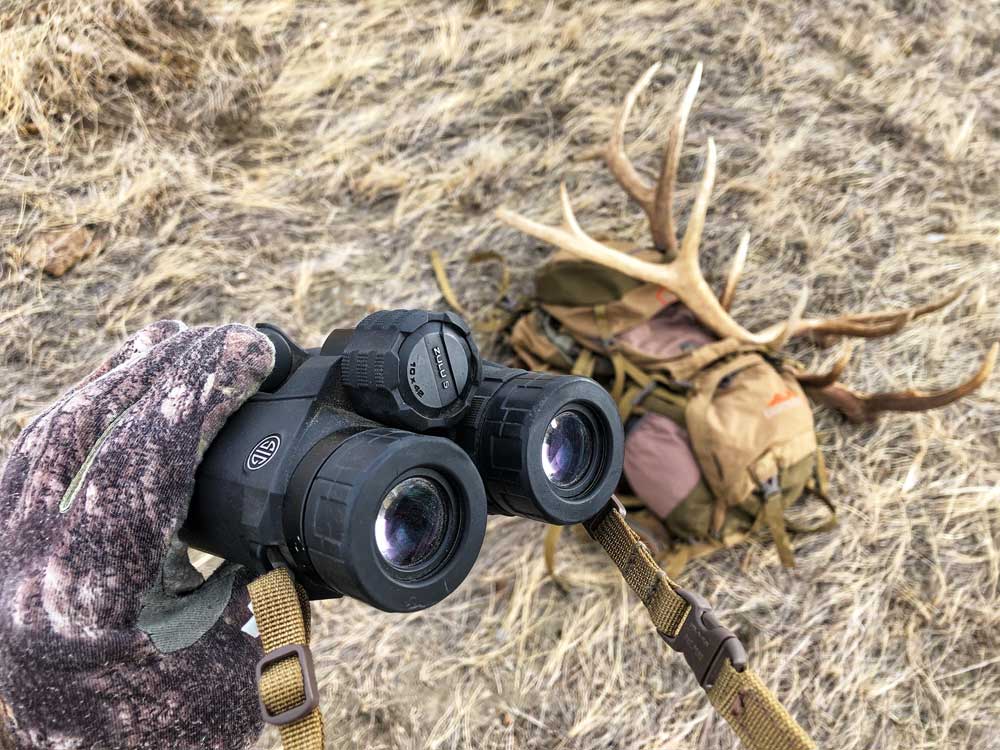
Before you set your waypoint West, consider some of the differences to the adventure and pack your gear accordingly. First, whether you are chasing deer or elk antlers, your hikes will be longer. Acquire rugged hunting boots early to break them in. Forget about your Muck boots or even lightweight hikers with a tennis shoe fit. You will encounter rocks, water, snow, mud and loose shale. Your boots need to meet the challenge and add gaiters. A hiking staff is a bonus to brace yourself up and down the steepness.
Next, equip yourself with a worthy binocular. You will be searching across basins, canyons, through forests and scanning sagebrush flats. Elk antlers are big and points glisten from afar, but you may only catch glimpses of deer antlers peeking from cover. I routinely find as many antlers using my Sig Sauer Zulu 10-power binocular as I do stumbling across them in rough country.
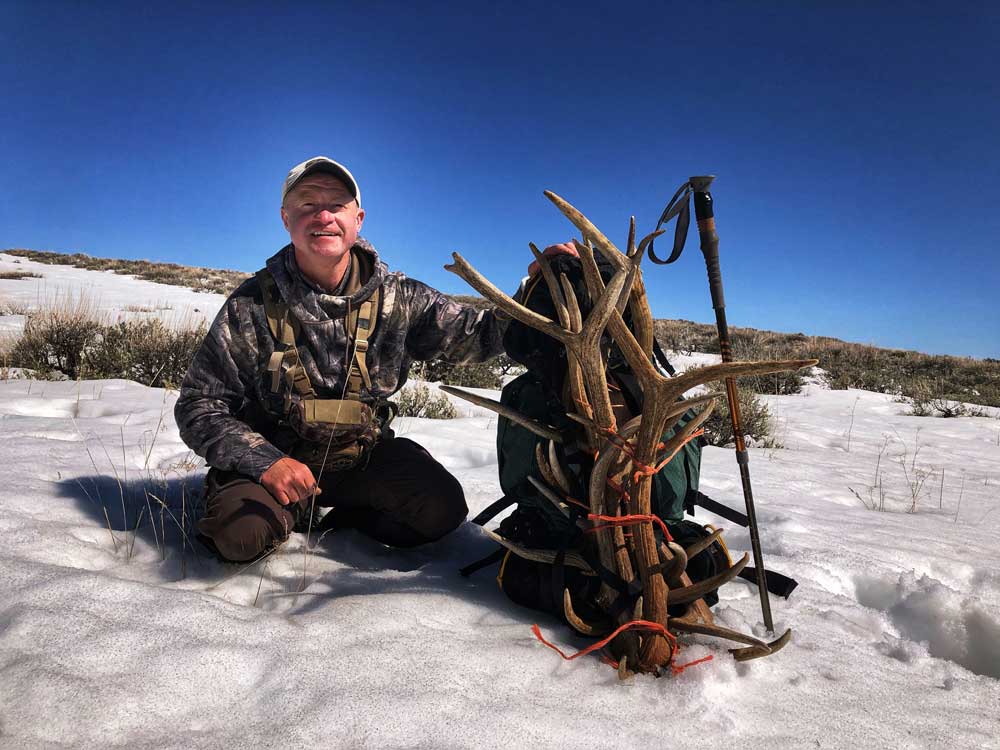
Finally, leave the daypack at home. You will need backpack that can handle heavy, cumbersome loads. My go-to pack is the ALPS Ultralight Elite due to its customizable, lightweight construction. First aid, survival gear, navigation and communication should also garner space in your pack. Western country is desolate and unforgiving during any month, especially the everchanging spring cycle of weather. Be prepared to get stuck anywhere overnight. Once you are outfitted, you can begin scouting from home on your hunting app and begin planning for an antler adventure in the West.
Western topography country varies from the rain-forest-like environments of the Northwest, classic Rocky Mountains and even the deserts of Western movie backdrops. Scattered across these settings are varying vegetation species that attract wintering big game. Whitetails, mule deer and elk require different nutrition to sustain them over the winter. Deer are browsers and elk are grazers so look for corresponding vegetation they seek to stay in an area where they may drop antlers. Also, consider elevation and south-facing microclimates that stay free of snow. Big game will avoid deep snow and drop in elevation or seek the hospitable zones that have less snow depth.
Tall sagebrush species, mountain mahogany, Gambel oak and a multitude of shrub communities stage throughout big game country that provide nutrition. This is where animals will feed and possibly drop antlers, but they also seek refuge in timber at times. The Tree Cover feature on my HuntStand hunting app quickly defines the best refuge for area big game. Oftentimes elk and deer bed on the crest of north-facing slopes and form snow-packed trails through these same slopes to reach the next open, south-facing food opportunity.
Whether in timber, brush or mesas, scan for any obvious trails in and out of these habitat mazes. Set up a grid pattern and follow discernable trails. Next, go off grid and peek in between bushes and look for antlers tucked up under a clump after tumbling downhill and lodging underneath overhanging branches. I have dug many an antler from underneath shrubbery and even had to clip limbs to free tines of the long, forgotten antlers that make for some of the best house decorations.
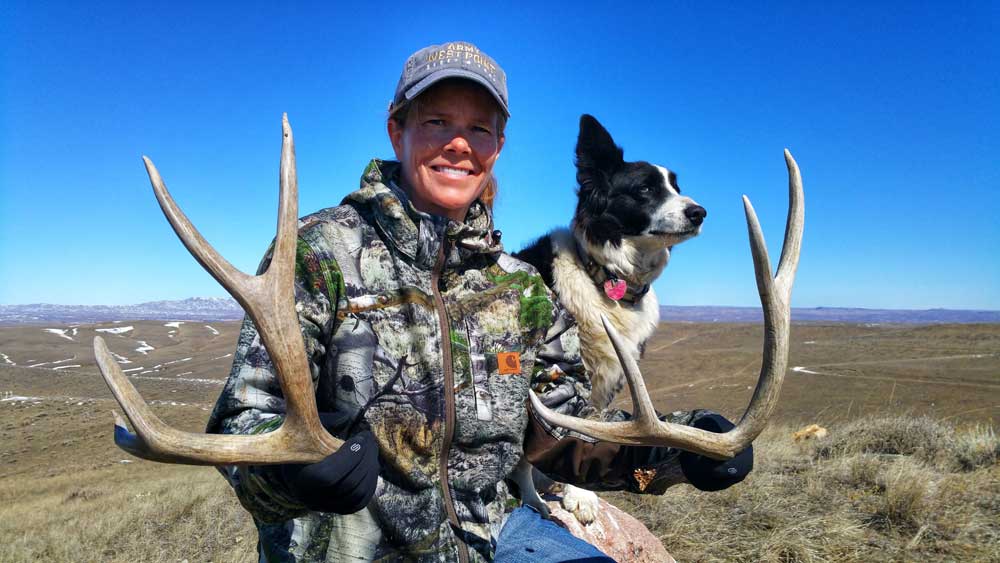
SCOUTING INTEL
Although shed antler hunting is an escape, use the findings for your next hunt. First, finding a fresh, brown antler guarantees a particular buck or bull at the very least made it through the previous hunting season. Barring any unforeseen weather event, or accident, the animal should be available for an upcoming hunt. Lots of shed antlers and animal sightings help you form an informal survey on the big game population for a unit.
And yes, many big game populations are migratory and drop antlers far from where you might find them during hunting season. That noted, use some forward thinking for them to give up their secrets. Some winter range regions accommodate big game from a wide area of high-elevation country. Bulls and bucks that winter in one unit may summer and spend part of their fall in an adjoining unit.
Others may hit the down arrow on the elevator and funnel straight downhill from a particular hunting unit. And in some regions, big game have everything they need in an immediate area and do not migrate at all. It is up to you to determine where your targeted herds spend their summer and fall. Visit with biologists and conservation officers to confirm your hunch as these professionals monitor migrations and stationary herds alike.
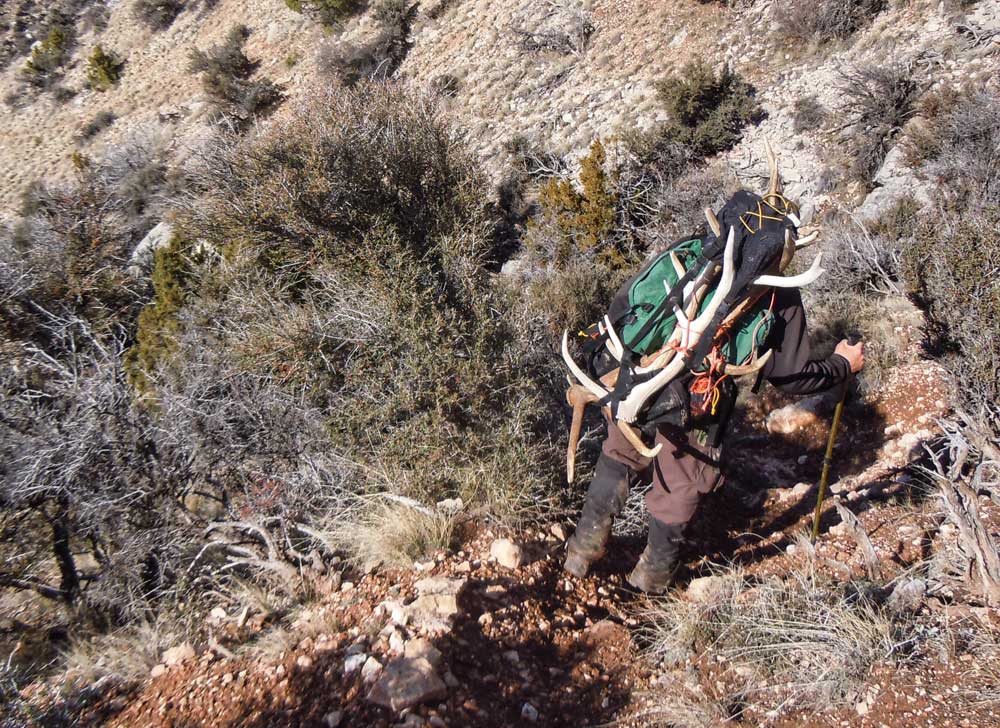
BE KIND
Lastly, be ethical. Elk and deer going into spring are at their weakest. They have burned off stored fat during the rut and whittled away any leftovers to stay warm. Cows and does have also depleted their fat reserves and if the summer was drought stricken, they may not have been in top shape going into winter.
Any added anxiety could cause females to abort fawns and calves, push herds to higher elevation and even lead to death from any combination of stressful factors. Many habitat areas have seasonal closures for this reason so pay attention to regulations. Do not plan a trip West without first consulting any seasonal closures for the area you are targeting.
Elk begin dropping antlers in March and continue into April in most regions. Deer may begin dropping in January and continue through March. As the high country becomes free of snow, herds slowly push up in elevation to take advantage of nutrient-rich feed. If you do encounter big game, leave the area or circle wide to avoid having them sense your presence.
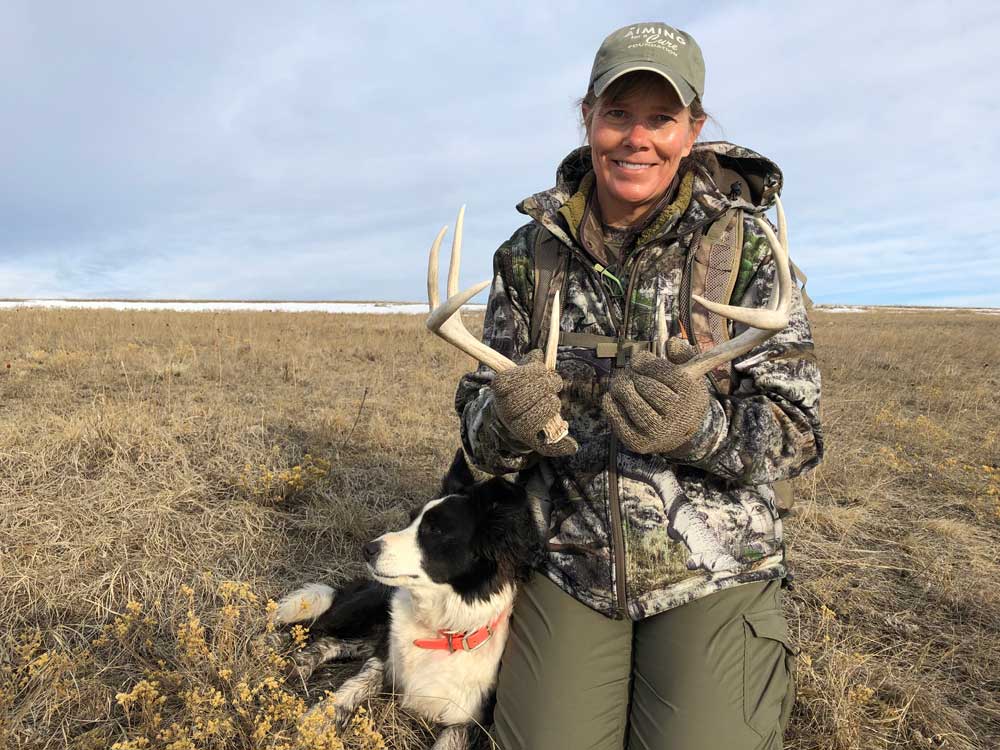
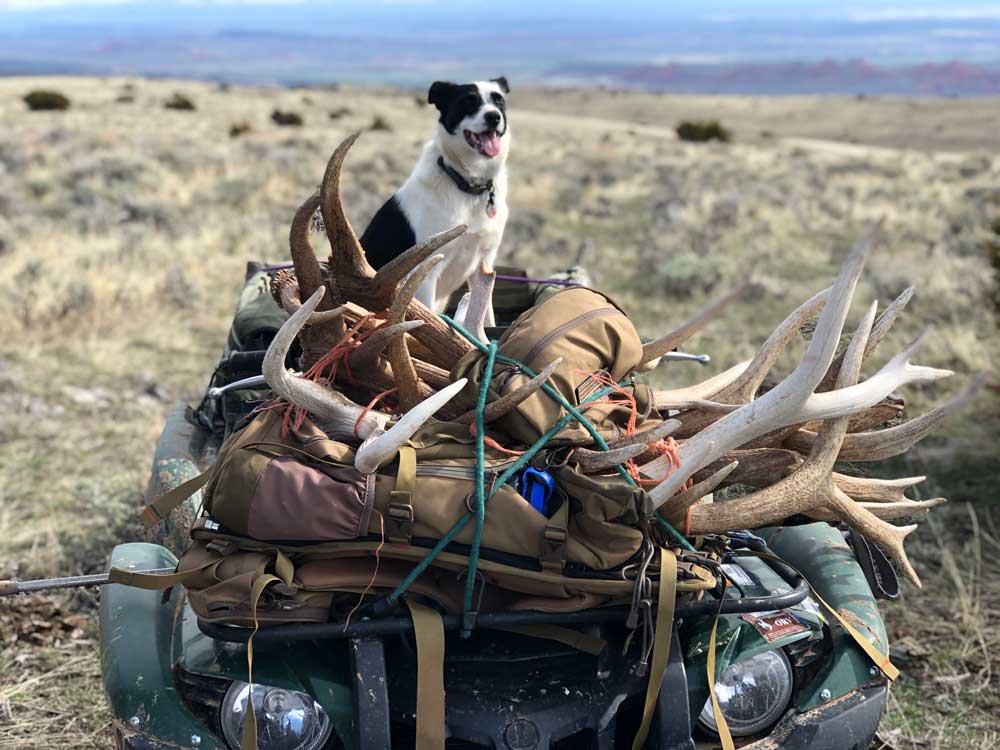
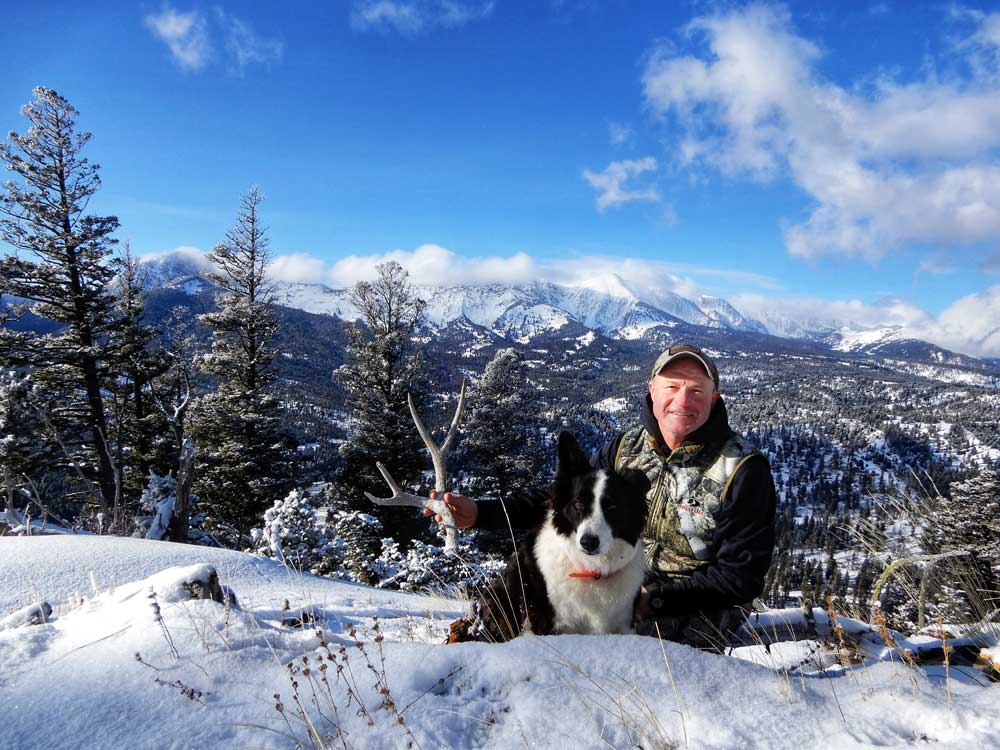
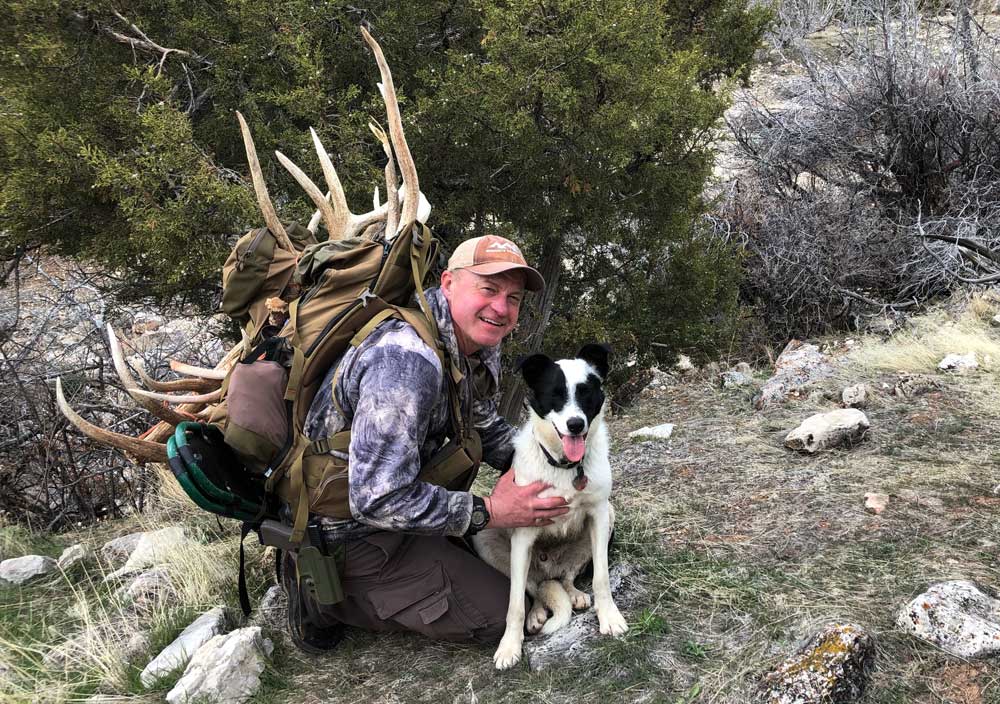
Shed antler hunting offers everything from a hunt except the reward of wild game meat. You will luckily find some bone, stretch your legs in a potential future hunting unit and hopefully avoid the Rip Wheelers of the West. It is a rewarding venture to break the cycle of cabin fever.
For more about Mark Kayser and ways to follow him on social media, visit www.markkayser.com.

